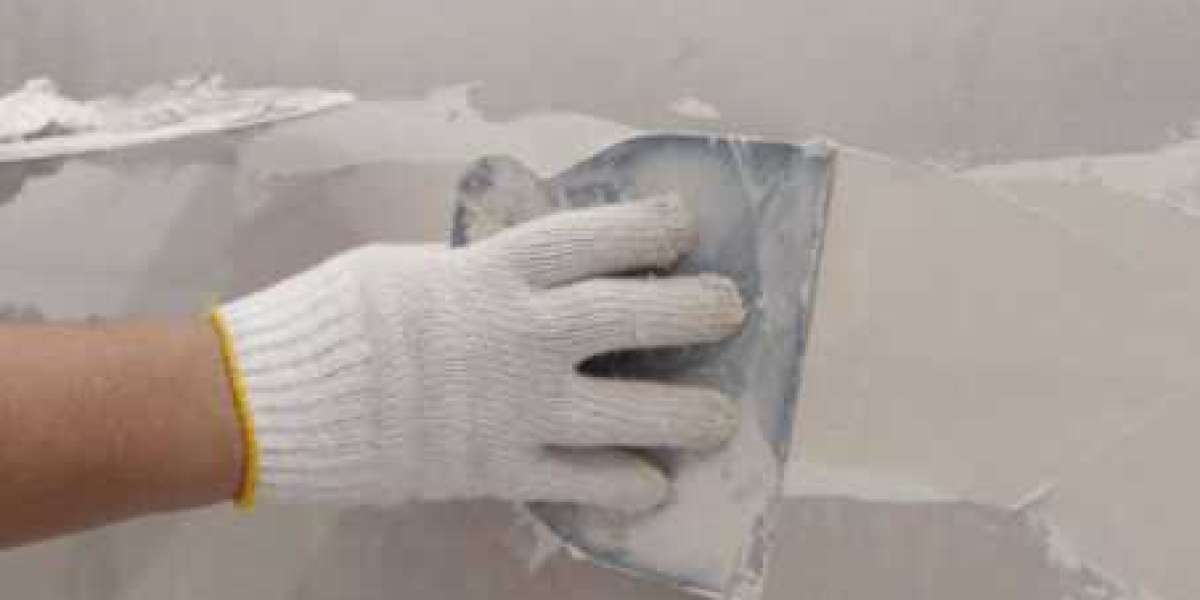Bonding plaster plays a crucial role in the construction and renovation industries, particularly when it comes to preparing surfaces for topcoat applications. Used as an undercoat plaster, bonding provides a solid and level base, making it indispensable for achieving smooth, professional finishes. In this guide, we will explore what bonding is, how it works, and why it is vital for plastering projects. Whether you are a tradesperson or homeowner curious about the process, understanding bonding can help you ensure high-quality results for walls and ceilings.
What is Bonding Plaster?
Bonding plaster, also known as bonding coat, is a type of undercoat plaster designed to adhere to surfaces that may not naturally bond with finishing plaster. It is used to create a flat, even surface, ensuring that finishing coats, such as multi-finish or skim plaster, can be applied smoothly. One of the key features of bonding plaster is its excellent adhesion to tricky substrates, including brick, concrete, and surfaces that have low suction, meaning they do not readily absorb moisture.
This type of plaster is part of a two-coat system, where the first layer, the bonding coat, forms the foundation, and the second coat, a finishing layer, achieves the desired smoothness and visual appeal.
Why Bonding Plaster is Essential for Plastering Projects
Using bonding plaster ensures that the final finish is not only visually pleasing but also durable. In plastering, preparation is everything. Without a properly prepared base, even the most skilled tradesperson will struggle to achieve long-lasting results. Bonding fills irregularities, levels out uneven surfaces, and provides a consistent base for the finishing coat to adhere to.
Moreover, it solves common adhesion problems when dealing with non-porous or low-suction surfaces. Without an effective undercoat, these surfaces can cause the topcoat to crack, flake, or fail to set properly. By using bonding plaster, you create a secure foundation that enhances the strength and longevity of the final finish.
Ideal Situations for Using Bonding Plaster
Bonding plaster is the go-to choice when working on surfaces that do not naturally bond with finishing plaster. It is ideal in the following scenarios:
1. Plastering Over Smooth Surfaces:
Walls made of engineering brick or dense concrete are challenging to plaster directly. Bonding creates a key for the finishing coat to adhere to these surfaces.
2. Repairing Damaged Walls:
When patches of old plaster have fallen away, bonding is used to level out the damaged area before applying a new finish.
3. Covering Mixed Surfaces:
In renovations, you may encounter areas with different materials, such as brick and blockwork. Bonding ensures a uniform surface across these variations.
4. Concealing Pipes and Wires:
For small channels cut into walls for electrical wiring or plumbing, bonding plaster fills the gaps before skimming the entire wall.
How to Apply Bonding Plaster
Achieving the best results with bonding plaster requires proper preparation and technique. Below are the key steps to follow during application:
1. Prepare the Surface:
Before applying bonding plaster, ensure the surface is free from dust, grease, or loose material. Dampen the area slightly if it is too dry, as this helps the plaster adhere better.
2. Mix the Plaster Correctly:
Follow the manufacturer’s instructions when mixing bonding plaster. The consistency should be thick but workable, allowing it to stick to the surface without dripping.
3. Apply the First Coat:
Using a trowel, spread the bonding plaster evenly across the surface. Aim for a thickness of about 10mm. The goal is to cover the area thoroughly while maintaining an even layer.
4. Create a Key for the Finishing Coat:
Once the bonding plaster starts to set, use a scratching tool to score the surface lightly. This provides a mechanical key for the final plaster coat to grip onto.
5. Let the Plaster Set:
Allow the bonding coat to dry properly before applying the finishing coat. This step ensures that moisture does not interfere with the setting process of the topcoat.
Common Mistakes to Avoid with Bonding Plaster
To achieve a professional finish, it is essential to avoid common mistakes when using bonding plaster. Some frequent issues include:
Incorrect Mixing: If the plaster is too thin, it will slide off the wall. If it is too thick, it may not adhere properly. Always follow mixing guidelines.
Applying Too Thick a Layer: Although bonding plaster is forgiving, applying excessively thick layers can lead to cracking as it dries. Stick to the recommended thickness.
Rushing the Process: Bonding plaster needs time to set before the finishing coat can be applied. Skipping this step can cause problems with adhesion.
Ignoring the Substrate Condition: Always prepare the surface adequately. Even bonding plaster needs a clean and slightly damp surface for best results.
Benefits of Using Bonding Plaster
Using bonding plaster offers several benefits for plastering projects:
Strong Adhesion: It provides excellent grip on difficult surfaces, ensuring the final coat stays in place.
Versatility: Bonding plaster works well on a variety of substrates, making it suitable for new builds and renovations alike.
Time-Efficient: It sets relatively quickly, allowing plasterers to complete projects efficiently without compromising on quality.
Smooth Base for Topcoat: By creating a flat, level surface, bonding plaster ensures a smooth and professional final finish.
When to Avoid Using Bonding Plaster
While bonding plaster is highly versatile, there are certain situations where it may not be the best choice. For example, it is not ideal for exterior applications, as it is not designed to withstand exposure to the elements. Similarly, in areas with high moisture levels, such as bathrooms or kitchens, bonding plaster may not be sufficient on its own. In such cases, consider using moisture-resistant plaster or additional sealants.
The Role of Bonding in Modern Renovation Projects
Bonding plaster plays a vital role in modern renovation projects. It enables tradespeople to achieve high standards of finish, even when working with challenging surfaces. Whether restoring old properties or creating new interiors, bonding plaster provides the foundation needed for achieving smooth, flawless walls and ceilings.
In older buildings, bonding is particularly useful for repairing uneven or crumbling surfaces. It fills gaps, levels out imperfections, and offers a strong base for the final decorative layer. The ability to bond various materials together ensures that renovated spaces look cohesive and well-finished.
Final Thoughts
Bonding plaster is an essential tool in the plasterer’s arsenal. It allows professionals to tackle difficult surfaces, create even bases, and achieve high-quality finishes with confidence. Whether you are working on a renovation or a new build, understanding how to use bonding plaster effectively ensures a smooth and lasting result.
With its strong adhesive properties and versatility, bonding plaster offers reliable solutions for both small repairs and larger plastering projects. Proper preparation, correct application techniques, and attention to detail are key to making the most of this product. When used correctly, bonding plaster guarantees a durable, smooth, and visually appealing finish that will stand the test of time.



